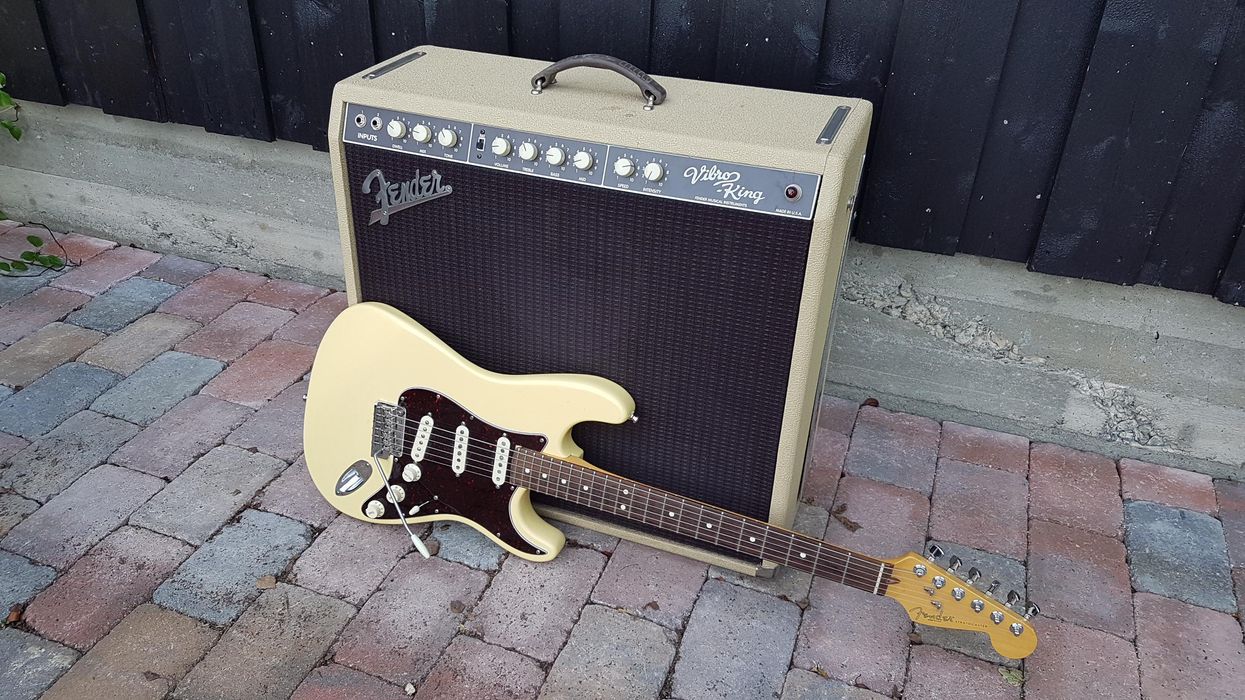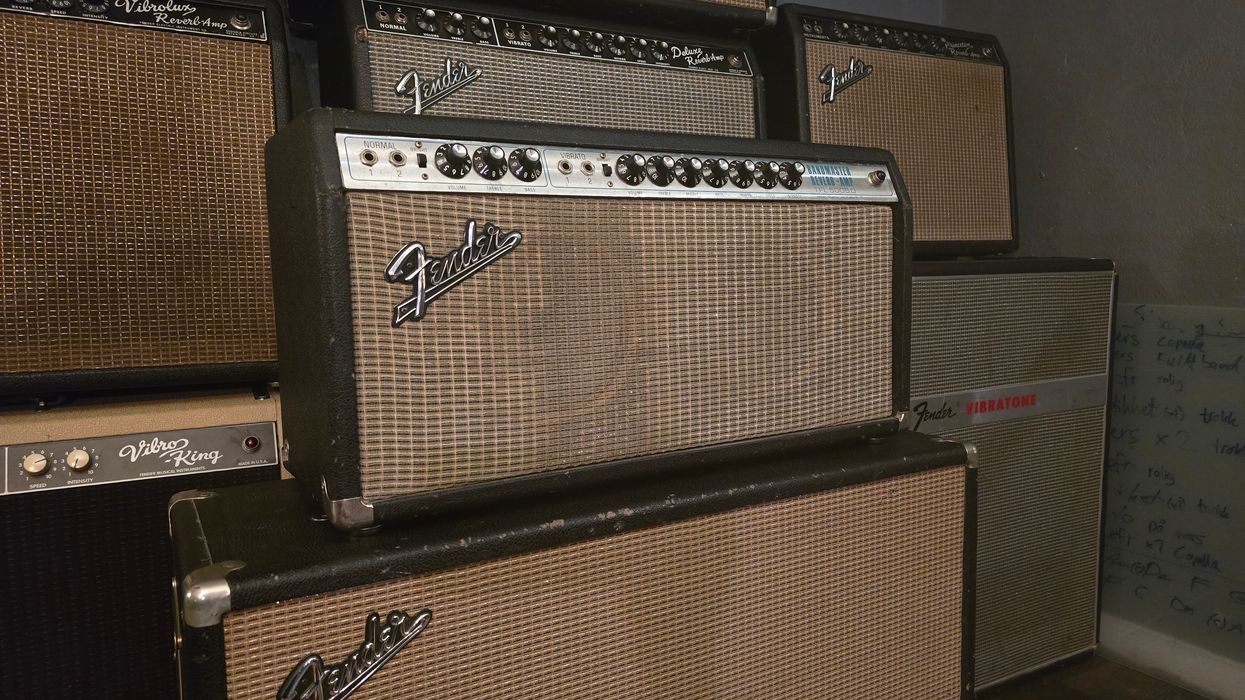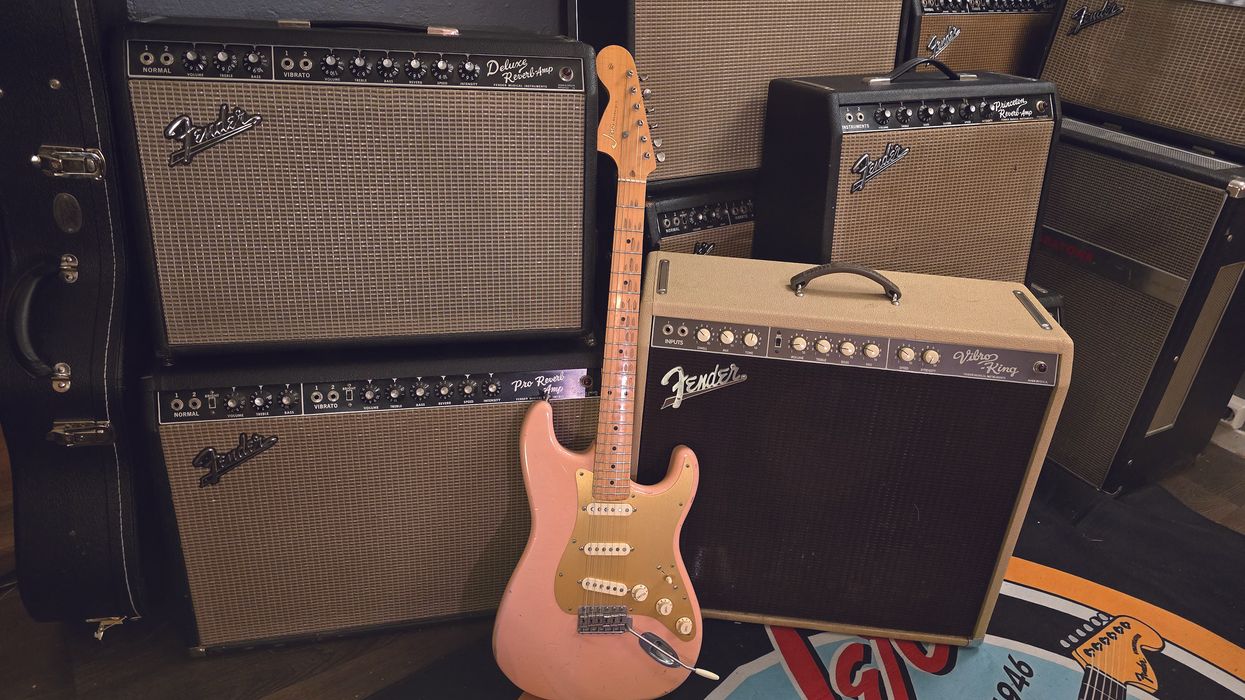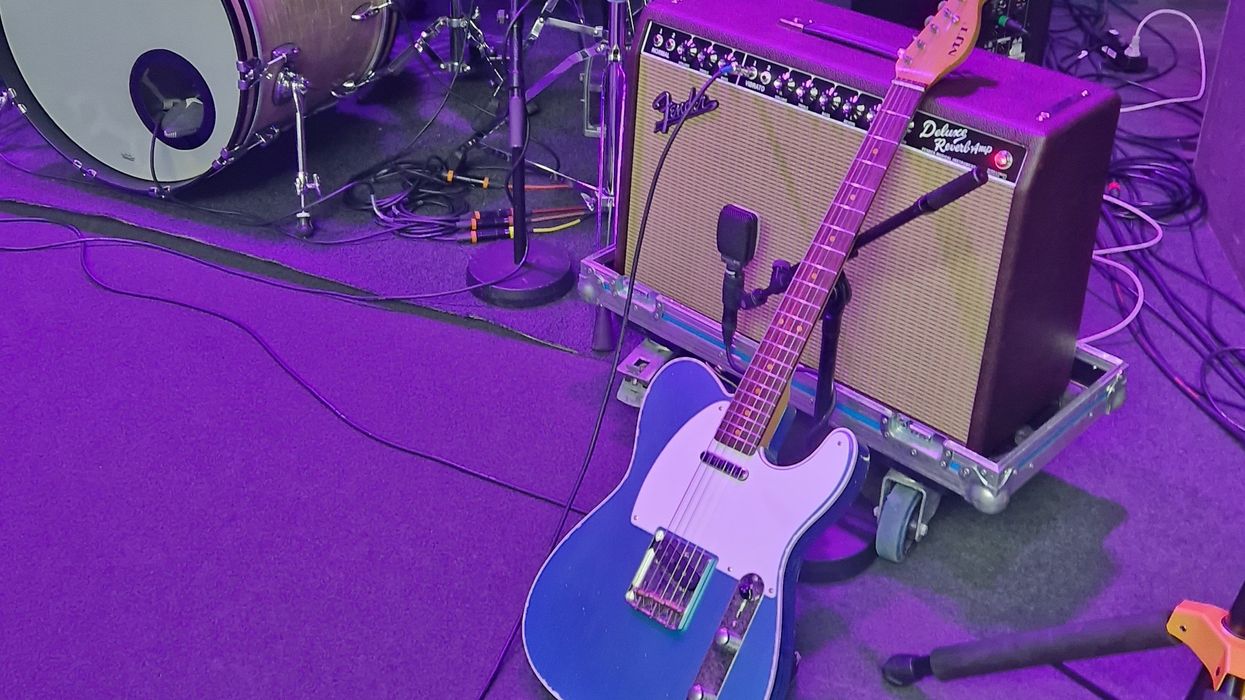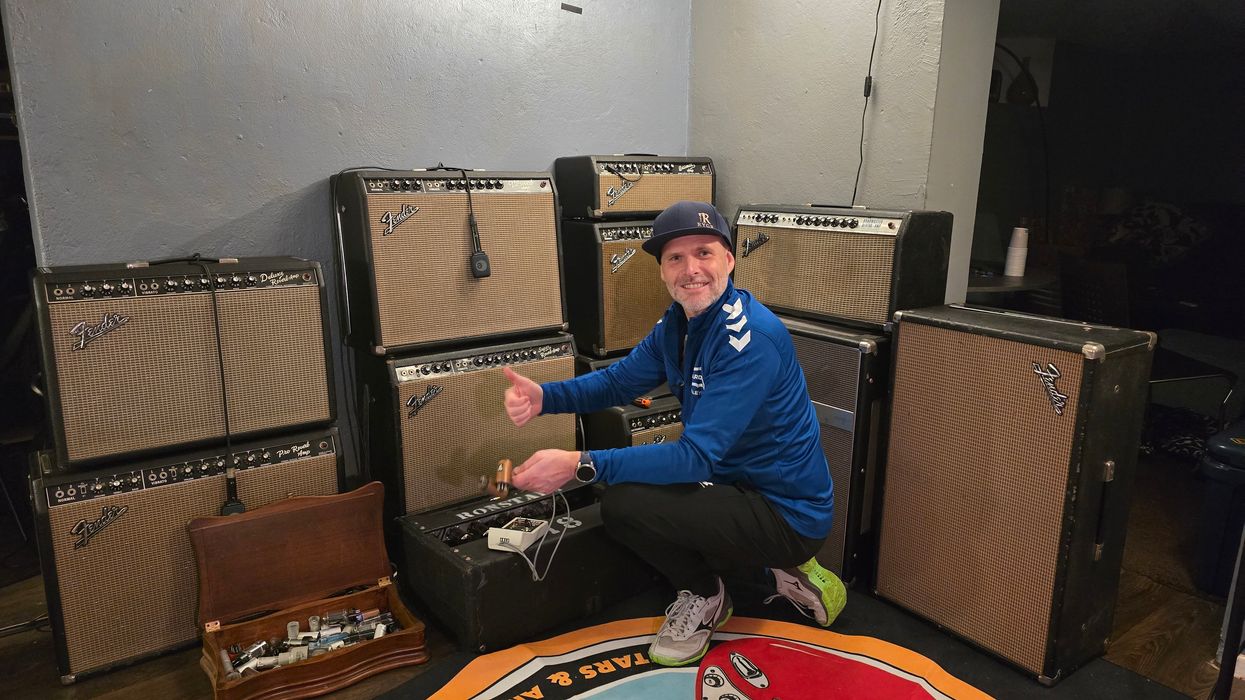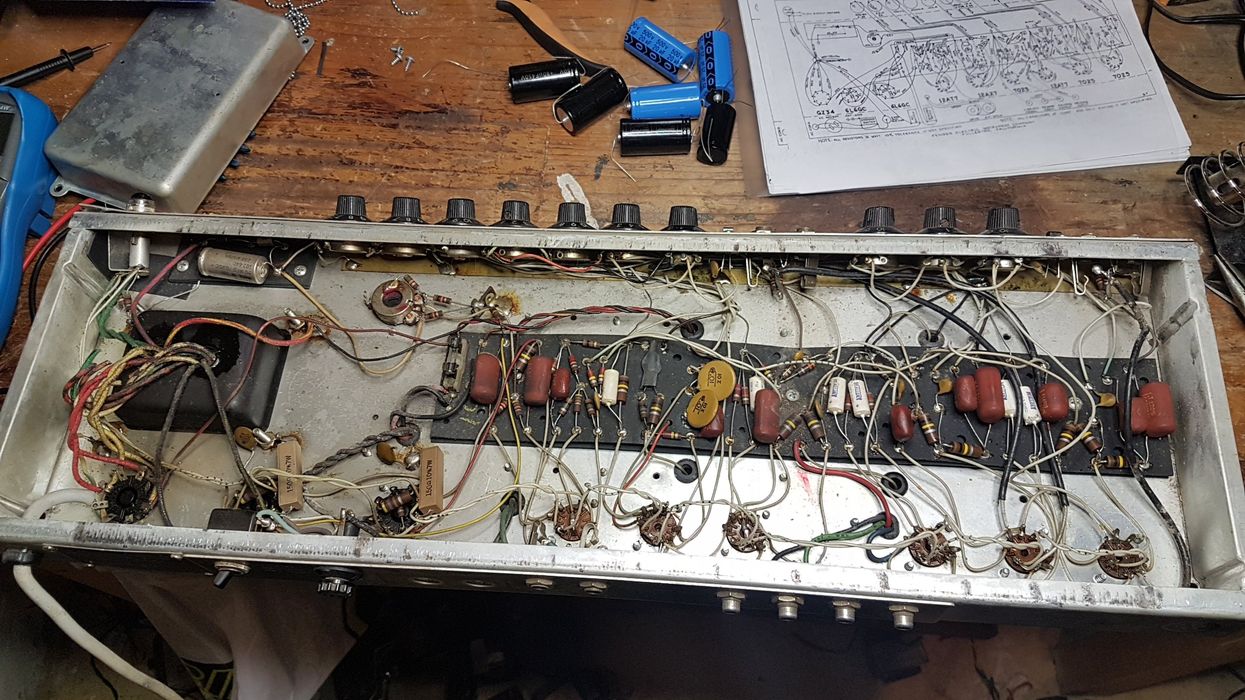I'd like to pay respect to the Fender Vibro-King. I still remember how I first admired it, brand new in guitar magazines, in 1994. It was the raw, wild, and blonde Viking cousin of the classic vintage Fender amps. I immediately wanted one and got my first in 2004. So, let me share my view on this flagship from Fender's Custom Shop.
The most recent model, the 20th Anniversary Edition, was discontinued in 2014. Other than a change from EL84 to 6V6 tubes in the reverb section for improved durability, the amp circuit was fairly consistent during its years in production. There were various color schemes: blonde, black, light brown, dark brown, naked maple, and hand-tooled Tolex. And for its 3×10 array, Fender used various speakers, starting with blue-framed Eminence alnicos, then Jensen P10Rs and Celestions in custom models.
With dual 6L6GC power tubes and a class AB push/pull configuration, its big-iron transformers produce a whopping 60 watts at 2 ohms. The large power transformer contributes significantly to an overall weight of about 70 pounds. With the right or wrong speakers, this amp can weigh as much as 88 pounds. But contrary to older, less robust vintage Fenders, the Vibro-King's massive, solid cabinet can carry heavy speakers and deliver tons of punchy bass response. A set of Weber 10A150s or Eminence Swamp Thangs has never been more fun. Fender did offer a matching 2×12 extension cabinet for those who wanted a full Vibro-King stack, but I find it loud enough with the three-speaker complement.
Sonically, the Vibro-King falls between tweed and black-panel-era Fenders, whether sparkling clean or wildly cranked, and even at low volume. The amp's distortion is attributable to the design of the preamp section and the lack of a negative feedback loop in the power section. You can dial in a wide span of tones using volume, EQ, and the fat boost—more than a typical vintage Fender amp.
Players seem to either love or hate the Vibro-King. I suspect the haters haven't experimented enough with speakers and EQ settings. The Vibro-King also has an unusual control panel, with a dedicated reverb section, with dwell, mix, and tone dials, and the usual tremolo depth and intensity, plus volume, treble, bass, and mid knobs, and a slider for that fat boost.
If the amp is set in its sweet spot, the footswitchable fat boost will allow you to flip between a clean tone for rhythm or a cranked-up lead tone for solos.
I've kept the light Eminence alnico speakers in my own 1994 Vibro-King. I love the loose low end and strong upper mids. I've found some of the best modern Jimmie Vaughan tones with my amp, but it can also easily do Keith Richards. The quick, snappy response and touch sensitivity allows trebly nuances from your fingertips, strings, and fretboard. If you're into more generic tones or the familiar black-panel Fender sound, Jensen P10Rs or C10Qs will do that for you, too.
Some advice to those who are not into reverb or tremolo: Steer away from this amp! As mentioned, five out of nine faceplate controls are dedicated to reverb and tremolo. If you're into that, the Vibro-King is a delight. The reverb section has the same controls as the classic vintage Fender standalone reverb unit and offers a huge selection of tones. However, the EL84 Vibro-King is known for occasional issues with the reverb circuit, causing overwhelming waves of reverb and burnt tubes. But you can get lucky. I had an EL84 reverb tube in mine for over 15 years.
If the amp is set in its sweet spot, the footswitchable fat boost will allow you to flip between a clean tone for rhythm or a cranked-up lead tone for solos. For some players, this eliminates the need for a boost pedal. It's also worth noting that the tone controls are quite sensitive and differently biased than black-panel and silver-panel Fenders. Expect to spend some time finding good settings.
Here are two tone strategies to try:
- Low volume and high/maximum EQ settings with the fat boost on, which creates a tweed/blonde tone with little clean headroom and lots of preamp gain at low volumes.
- High volume and low EQ settings with the fat boost off, to craft a clean, scooped, black-panel tone, with little or no preamp gain and lots of headroom.
If you haven't played a Vibro-King, you're missing an exciting experience. It's not the amp for everyone, but for some it's the Fender amp they've always looked for. Skeptical? Watch the YouTube clip below of Gary Clark Jr. onstage with the Rolling Stones and John Mayer. As difficult as it can be to cut through when four guitarists are playing together, Clark tears it up with a humbucker-loaded ES-335 through a Vibro-King. Until the next time, may the tone be with you.
The Rolling Stones, Gary Clark Jr. & John Mayer_Going Down Live
To get an earful of Gary Clark Jr.'s Vibro-King tone, check out the Rolling Stones and their additional guest, John Mayer, stomping through the Don Nix-penned blues-rock classic, "Going Down," in 2012.
